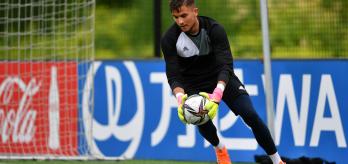It is generally accepted that the physical load placed on young players during training should be increased gradually as they move through various developmental stages, but finding the right balance can be tricky. In this study, researchers compared the physical loads to which a Dutch club’s U-19 team were exposed in training with those of the first-team squad. Their results provide some intriguing clues about how to prepare youngsters for the rigours of the professional game.
Key take-aways
-
Training load should be increased gradually for youth players who are expected to make the transition to first-team football. One way of doing that might be progressively to make training sessions shorter and more intense.
-
Load is determined by training volume, intensity and monotony. You need to take all three factors all into account when assessing the overall demands on players.
-
This research was specific to an individual club and the context in which it was operating at the time. Practitioners should look to compare load metrics for the different teams within their clubs and use that data to ensure that players moving into the first team are as well-prepared as possible.
Watch brief
Read summary
Part 1: Aims and methodology
This study aimed to pinpoint some of the differences in training load between a professional first-team and an U-19 squad. To do that, researchers collected data from a Dutch first-team that was involved in a European competition at the time (meaning it was often playing twice a week) and compared it against the equivalent measurements for the same club’s U-19 side. The researchers analysed the two squads’ training schedules in terms of volume, intensity and monotony to determine the training demands experienced by both squads.
Part 2: Results
Surprisingly, the analysis showed that overall training volume in terms of total distance covered was actually higher in the U-19 squad than it was in the first team. Significantly, though, this was due to the fact that the youngsters covered more distance at lower intensities. This was partly because youth players were training more and playing fewer matches than their senior counterparts, whose training sessions tended to be shorter and more intense. As expected, youth training was more monotonous than first-team training, suggesting that first-team players were more accustomed to transitioning between high-load conditioning work and low-load recovery sessions.
Paper citation and link
Houtmeyers, K. C., Jaspers, A., Brink M. S., Vanrenterghem, J., Varley M., Helsen, W., 2021, “External load differences between elite youth and professional football players: ready for take-off?”, Science and Medicine in Football, vol. 5, no. 1, pp. 1-5.








.variant64x64.jpg)


.variant348x164.jpg)

